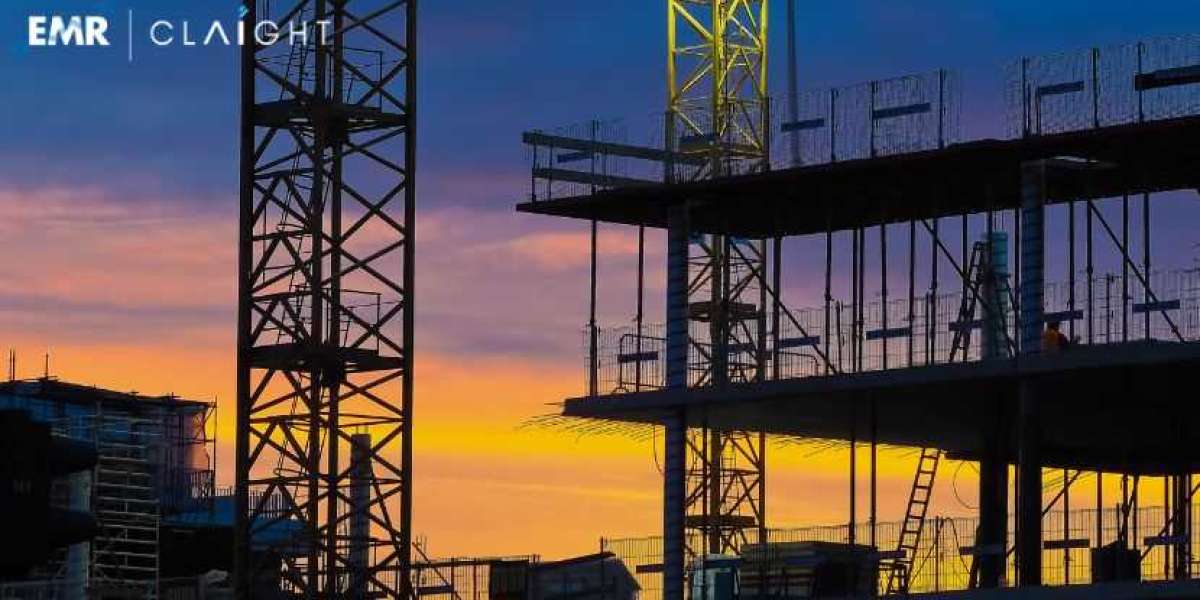Market Overview
The Europe construction market size is witnessing steady growth, with a projected market size of approximately USD 2,752.75 billion in 2024. The market is expected to grow at a compound annual growth rate (CAGR) of 4.90% between 2025 and 2034, reaching an estimated value of around USD 4,441.42 billion by 2034. This growth is driven by urbanization, demand for infrastructure development, and investments across various construction sectors, including residential, healthcare, and hospitality.
Market Trends
The Europe construction market is evolving with several key trends that are shaping its future. The adoption of sustainable building practices is one of the most significant drivers, as governments and consumers push for energy-efficient and environmentally friendly buildings. The rise of smart construction technologies, including the use of AI, robotics, and IoT, is also transforming the industry. These innovations are enhancing construction efficiency, reducing costs, and improving safety on job sites. Modular and prefabricated construction is gaining traction due to its ability to deliver faster and more cost-effective solutions, particularly in residential and commercial projects. Additionally, post-pandemic recovery has accelerated demand for healthcare infrastructure, with governments across Europe focusing on building new healthcare facilities and upgrading existing ones to meet future demands. Furthermore, the increasing need for affordable housing is influencing the market, especially in cities facing housing shortages. These trends are driving the growth of the construction industry and will continue to do so in the coming years.
Market Growth
The European construction market is poised for steady growth from 2025 to 2034. With an expected CAGR of 4.90%, the market is forecast to expand from USD 2,752.75 billion in 2024 to USD 4,441.42 billion by 2034. Key drivers behind this growth include urbanization, the demand for infrastructure, and advancements in construction technologies. As European cities continue to expand, there is a growing need for residential, commercial, and infrastructure projects. The increased focus on sustainable construction practices is also contributing to the market’s growth, as governments introduce stringent regulations to reduce carbon footprints. Additionally, post-pandemic recovery has prompted governments to invest heavily in healthcare infrastructure, further boosting construction demand. The increasing emphasis on smart homes and smart buildings will continue to support growth in both the residential and commercial sectors, driving demand for new constructions that integrate advanced technologies. The market is expected to maintain a steady pace of growth due to these sustained investments in infrastructure and housing.
Market Segmentation
By End Use
- Residential: The residential sector is expanding due to population growth and the demand for more housing in urban areas. There is a significant push for affordable housing, which is stimulating market growth in this category.
- Healthcare: Construction in healthcare continues to grow, driven by the need for new hospitals, clinics, and healthcare centers. This sector experienced heightened demand during the COVID-19 pandemic and continues to see growth as governments invest in healthcare infrastructure.
- Hospitality: With a growing tourism industry in Europe, the demand for hotels, resorts, and related construction projects is increasing. The hospitality industry is a key driver of construction in regions with high tourist traffic.
- Others: This category includes office buildings, retail spaces, and mixed-use developments. Demand for commercial spaces remains strong, particularly in business hubs and emerging markets.
By Residential Buildings and Single Units
- Apartments/Flats: The rise of urbanization has led to a growing demand for apartments and flats, especially in major European cities where space is limited.
- Detached Houses: Detached houses are becoming more popular among consumers seeking privacy and space, particularly in suburban and rural areas.
- Semi-Detached Houses: These homes are favored by families seeking a balance between affordability and space, often located in residential suburbs.
- Terraced Houses: Terraced homes are in demand for their efficient use of space in urban environments, providing affordable housing options in city areas.
- Others: This category includes custom-built homes, eco-friendly homes, and modular housing, reflecting the growing interest in personalized and sustainable living spaces.
Regional Analysis
The European construction market is spread across different regions, each with unique dynamics and growth opportunities.
Companies Covered
Several leading companies dominate the European construction market, contributing significantly to its growth. These companies are key players in various construction sectors, from residential to commercial and infrastructure projects.
- VINCI SA
- ACS Group
- Skanska AB
- Bouygues Construction
- Hochtief AG
- Eiffage S.A.
- STRABAG International GmbH
- Balfour Beatty plc
- Ferrovial S.A.
- Acciona, S.A.
- Others
These companies are investing in technological innovations, sustainability practices, and strategic partnerships to stay competitive in the growing market. Many of these firms are also focusing on expanding their market presence through acquisitions and joint ventures, strengthening their capabilities to handle large-scale construction projects across Europe.








